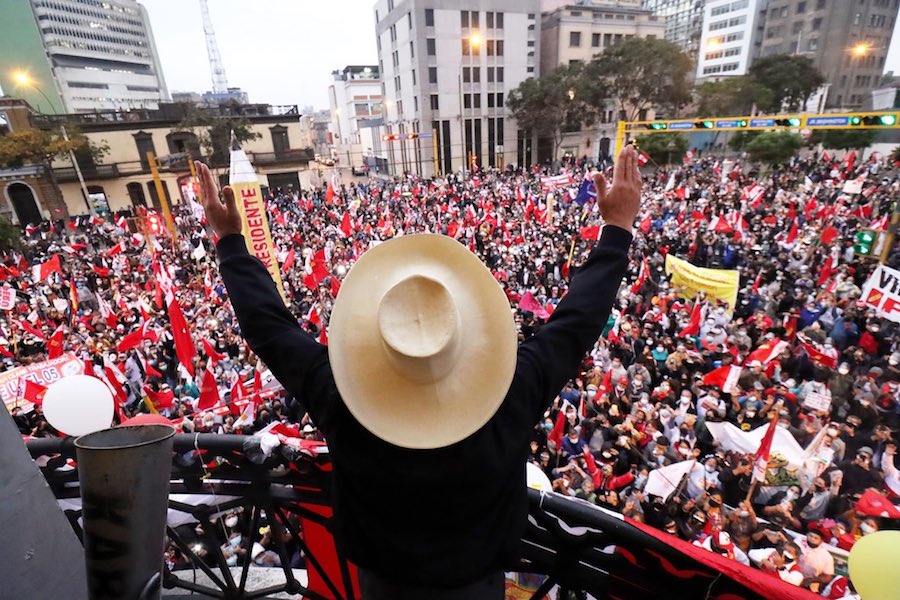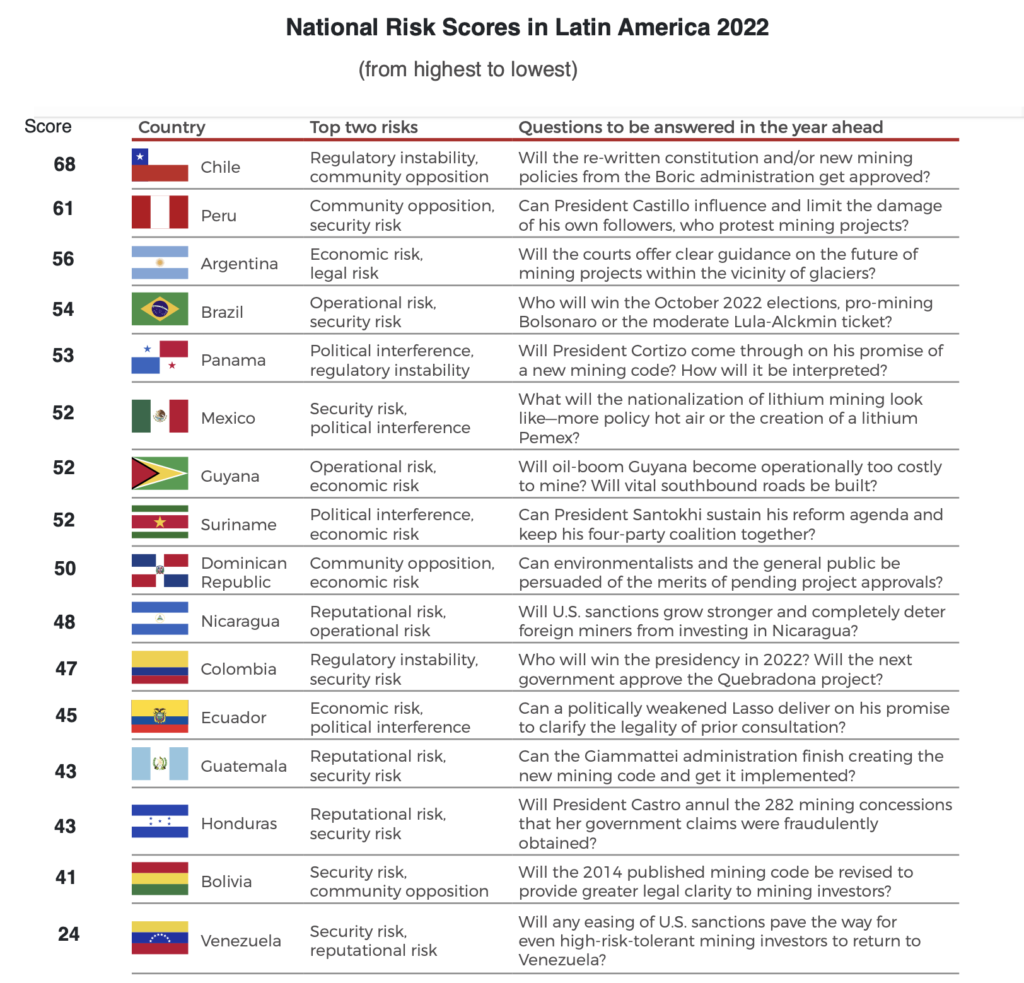Political changes boost risk for miners in Latin America


A rising demand to participate in the revenues from natural resources, tougher environmental protection rules and law changes are increasing risks for mining and energy companies across Latin America, even in countries once considered safe investment destinations, a new study shows.
According to the 2022 Latin America Mining Risk Index, published by consultancy Americas Market Intelligence (AMI), once investors’ darling Chile, is now the riskiest country in the region.
The nation is redrafting its market-orientated constitution, which dates back to the military dictatorship of Augusto Pinochet. It will hold a nationwide referendum vote on the new text in September, which could bring a full ban to mining in glaciers, many of which are adjacent to lithium deposits.
The new constitution may also include mandatory community prior consent on new concessions near indigenous land claims and the end to ownership of water within concession boundaries, replaced by a water permitting process.
The world’s top copper producer, which is home to global copper giants like Codelco, BHP, Anglo American, Albemarle and Antofagasta, scored 68 out of a maximum of 70 points in AMI’s ranking.
The consultants use a proprietary approach that divides risk into seven overlapping categories, namely political interference, economic pressure, community opposition, legal and regulatory instability, reputational risk, safety and security and operational risk.
Based on the metrics, Peru takes the second place, with 61 points and 80 projects on hold due to community opposition.
The mining industry blames President Pedro Castillo for the recent wave of social unrest. Since the former rural activist from a Marxist party took office, the number of social conflicts is up about 7% as the administration is prioritizing the right to protest over other concerns such as free transit.

Argentina, with 56 points, is the third riskiest country for miners and energy firm in Latin America.
The country has attracted over the past year major players, including the world’s second largest miner Rio Tinto and South Korean steelmaker Posco.
Economic pressure may hinder some of the expected growth in the industry, as ever-present fiscal crisis in Argentina pushes the government to raise taxes on its natural resource sectors, including mining, the report says.
Brazil sits on the fourth position, with 54 points. The country’s diverse geography, history, and people, combined with its decentralized political system, makes it challenging to analyze risk on a national level, the author of the index say.
They highlight an increasing number of projects in the Amazonian basin, thanks to concessions given by President Jair Bolsonaro, which have drawn global criticism.
Costs is another issue in Brazil, as almost everything is more expensive in Brazil than in the rest of Latin America, the authors say. Logistical costs in the country are, according to the report, are 50% higher than in Canada.
On top of that, in some Brazilian states like Bahia, security is of grave concern, mostly due to drug trafficking.
Completing the “top five” of risky countries is Panama, with 53 points. First Quantum’s Cobre Panamá put the country on the map by developing the world’s third-largest mine. With little mining history, Panama is only now waking to the industry’s potential, the report says.
The nation’s mining code, written in 1963, is outdated and fails to incorporate today’s best practices. Key issues that need to be addressed include adherence to best environmental stewardship practice, such as water, waste, and biodiversity management, the study says.
The authors of the ranking warn mining investors that country risk is only one of many factors to be considered ahead of project investment or lending.
Of equal or greater importance is the local investment climate, including interests of local stakeholders, fears and aspirations of local communities, the rule of law and security environment, as well as the historical relationship between the local community and national authorities, among other issues.
The report also highlights that most obstacles to mining projects Latin America currently originate from local, not national, issues.
This article originally appeared on www.Mining.com.
Comments